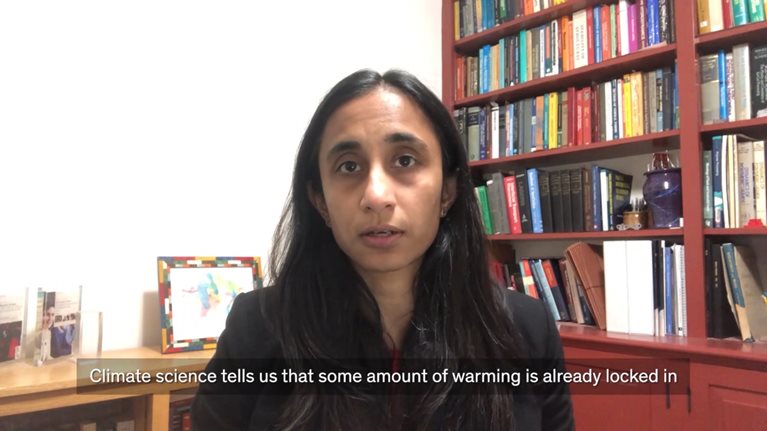What are the physical climate risks facing Asia?
If action is not taken now, our research finds that Asia is expected to see rising impacts from climate change across several different socioeconomic systems. And in many ways, Asia could experience more severe impacts from a changing climate than the rest of the world. Let’s look at four of these socioeconomic systems now.
Number one: livability and workability. We examined the inherent risk, that is the risk absent adaptation and mitigation action, to assess the full scale of the challenge to be addressed. We found that by 2050, up to 1.2 billion people globally could be living in areas that could experience heatwaves so severe that healthy human beings in the shade could die within four hours, and as many as one billion of these people could be in Asia. Asia also accounts for more than two-thirds of the global GDP at risk from outdoor working hours lost due to increased heat and humidity.
Number two: physical assets and infrastructure. Here our analysis shows that about $1.2 trillion in capital stock in Asia could be damaged by riverine flooding by 2050, which is more than 75 percent of the global impact. Consider Ho Chi Minh City, for example. Damage to infrastructure from a 100-year flood in Ho Chi Minh could result in $100-400 million of cost to the economy today. But by 2050, that number could rise to as much as $1.5 to $8.5 billion as flooding intensifies.
Would you like to learn more about the Future of Asia?
Number three: food systems. A changing climate could make food production in Asia more volatile and vulnerable. As one example, the risks of a greater than 5 percent granial (PH) decline in a given year could be 1.5X higher by 2050, which is actually slightly lower than the global number of 1.9X.
And, finally, number four: natural capital. The share of land area projected to experience biome shifts—that is a shift in environmental conditions which could affect the local flora and fauna—by 2050, is 40 percent by Asia. Many natural capital systems could be affected. Consider glaciers. Himalayan regions’ glaciers provide water for irrigation, energy generation, and other economic activities for the region’s 240 million residents. However, the melting of these glaciers has doubled since 2000. And more than a quarter of glacial ice in negatively-affected regions has been lost in the past four decades. These changes will have significant consequences, particularly for rural communities that rely on rivers.
So in summary, while the adaptation and mitigation challenges facing Asia are very significant, as we have discussed, they can be addressed. And indeed, there are a wide range of actions already underway, but more will need to be done. Building on and accelerating these efforts could pay off not only in protecting lives and livelihoods, but also by promoting sustainable growth and prosperity over the long term.


